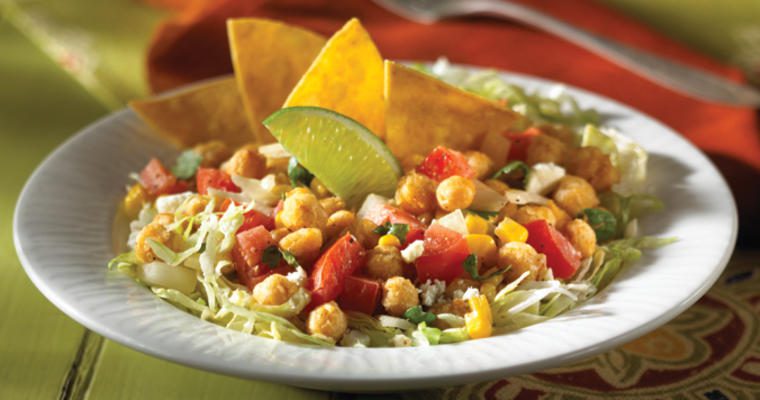Tacos, tortas, and quesadillas aren’t just for Mexican restaurants anymore. Today’s Latin cuisine emphasizes fresh ingredients and innovative flavor combinations inspired by regional dishes throughout Mexico, Latin America, and the Caribbean, leaving plenty of room for your own menu innovations.
“You don’t have to be an authentic Mexican restaurant to serve Latin food,” Ludwig says. “If you’re a family-style, casual restaurant, or sports bar, Latin food offers the opportunity to serve something completely different from the competition.”
Variety, value, and sales-building oppportunity
With the relatively low cost and the broad range of applications, Latin delivers exciting flavor, new experiences, and value across menu parts and restaurant segments.
“Latin continues to increase in popularity and is a proven sales-builder,” says Gordon Food Service Corporate Consulting Chef Gerry Ludwig, CEC. “Americans find Latin flavor profiles extremely acceptable and there are all sorts of opportunities to take those flavors and dishes and make them your own.”
Serve up Latin cuisine on your menu
These dishes offer a taste of Latin cuisine on your menu, no matter your restaurant style:
Tacos
According to research from the California-based research firm Datassential, the word “taco” appears on 11 percent of the menus of 1,000 independent innovators it tracks. The key concept here is innovation—something from which tacos have benefited greatly.
“Korean tacos are one of the most exciting new variations we’ve seen from Angelino cuisine, a fusion of Latin and Asian flavors,” Ludwig notes. “What makes them so popular is that Asian flavors mesh ideally with Latin bread carriers, particularly the corn tortilla. Kogi kicked it off with their Kogi BBQ Korean Taco trucks, but independents and chains have created their own versions, such as Tacos Dorado—corns tortillas with fresh, flavorful fillings like grilled meat, seafood, and veggies that can be prepped in advance, frozen, and then deep-fried.”
Tortas
Prepared with ingredients typically found in a tortilla but served on a bread carrier or bun, tortas can add variety to a sandwich menu and satisfy demand for Latin flavor.
“It may not seem like a big deal,” Ludwig says, “but when you take these ingredients and put them in a different carrier than expected, it completely changes the dining experience. Just as mostaccioli and lasagna are different dining experiences even though the basic ingredients are the same, a torta is a different experience than eating a burrito.”
The classic torta bread carrier is a bolillo—a crusty white-flour bun, but any roll hearty enough to hold all the ingredients without collapsing will do—kaiser rolls, ciabatta buns, sections of baguette or Italian bread. Fillings can include fajita meats, barbacoas, tingas, and flavorful Latin cheeses, a signature condiment, and vegetable toppings—anything goes as long as there’s a Latin flavor element.
Quesadillas
Use unexpected ingredients such as feta cheese and spinach, fresh seafood or lamb to create signature quesadillas, specials, or limited-time offers.
Translating Latin flavors to any menu
“There are all sorts of opportunities to incorporate Latin flavor into entrées,” Ludwig says.
- Serve marinated, whole-muscle cuts of beef, chicken, and pork grilled or pan-seared and topped with fresh Latin ingredients.
- Apply flavors and rubs usually associated with fajitas or carne asada to steaks or pork tenderloin.
- Menu contemporary Latin entrées. “One that can be a mainstream opportunity is Alambre,” Ludwig says. Toss char-grilled steak, chicken, shrimp, etc., with sliced tomatoes, jalapeños, onions, and peppers together in a tomato or cream-based sauce with shredded or melted cheese and then serve on a platter with tortillas as for fajitas.
- Use the “plus-one” approach to create signature condiments and sauces. For example, create a signature Latin condiment by adding chipotle or ancho chilies, avocado purée, chopped cilantro, or pico de gallo to mayonnaise.
- Top entrées with Latin herbs, such as fresh cilantro.
- Incorporate fresh Latin produce such as jicama into salads, sandwiches, and entrées.











